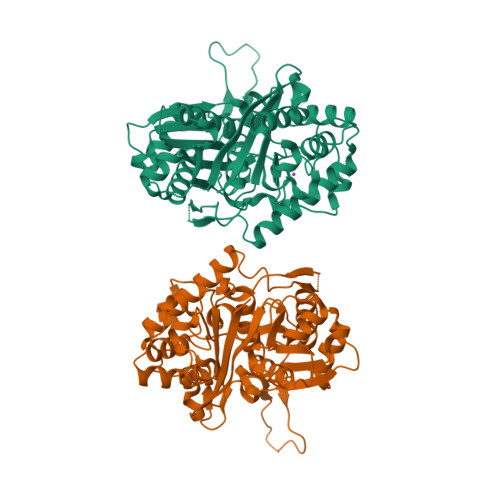Structural and Biochemical Studies of Substrate Selectivity in Ascaris suum Thiolases.
Blaisse, M.R., Fu, B., Chang, M.C.Y.(2018) Biochemistry 57: 3155-3166
- PubMed: 29381332
- DOI: https://doi.org/10.1021/acs.biochem.7b01123
- Primary Citation of Related Structures:
6BJ9, 6BJA, 6BJB - PubMed Abstract:
Thiolases are a class of carbon-carbon bond forming enzymes with important applications in biotechnology and metabolic engineering as they provide a general method for the condensation of two acyl coenzyme A (CoA) substrates. As such, developing a greater understanding of their substrate selectivity would expand our ability to engineer the enzymatic or microbial production of a broad range of small-molecule targets. Here, we report the crystal structures and biochemical characterization of Acat2 and Acat5, two biosynthetic thiolases from Ascaris suum with varying selectivity toward branched compared to linear compounds. The structure of the Acat2-C91S mutant bound to propionyl-CoA shows that the terminal methyl group of the substrate, representing the α-branch point, is directed toward the conserved Phe 288 and Met 158 residues. In Acat5, the Phe ring is rotated to accommodate a hydroxyl-π interaction with an adjacent Thr side chain, decreasing space in the binding pocket and possibly accounting for its strong preference for linear substrates compared to Acat2. Comparison of the different Acat thiolase structures shows that Met 158 is flexible, adopting alternate conformations with the side chain rotated toward or away from a covering loop at the back of the active site. Mutagenesis of residues in the covering loop in Acat5 with the corresponding residues from Acat2 allows for highly increased accommodation of branched substrates, whereas the converse mutations do not significantly affect Acat2 substrate selectivity. Our results suggest an important contribution of second-shell residues to thiolase substrate selectivity and offer insights into engineering this enzyme class.

















